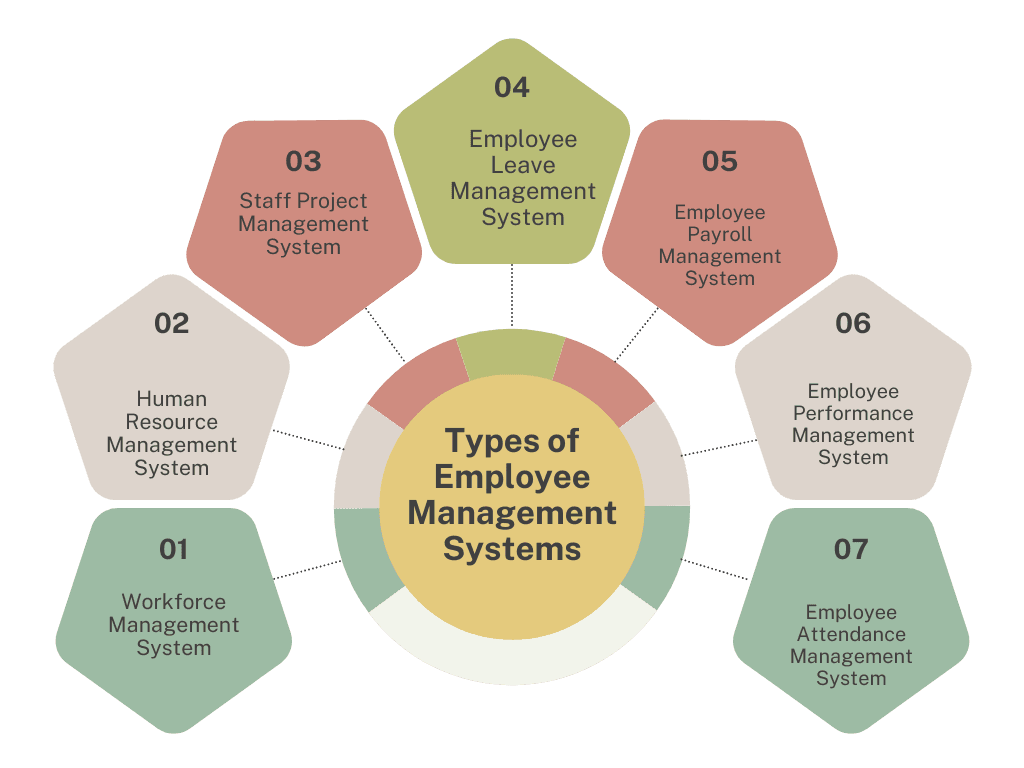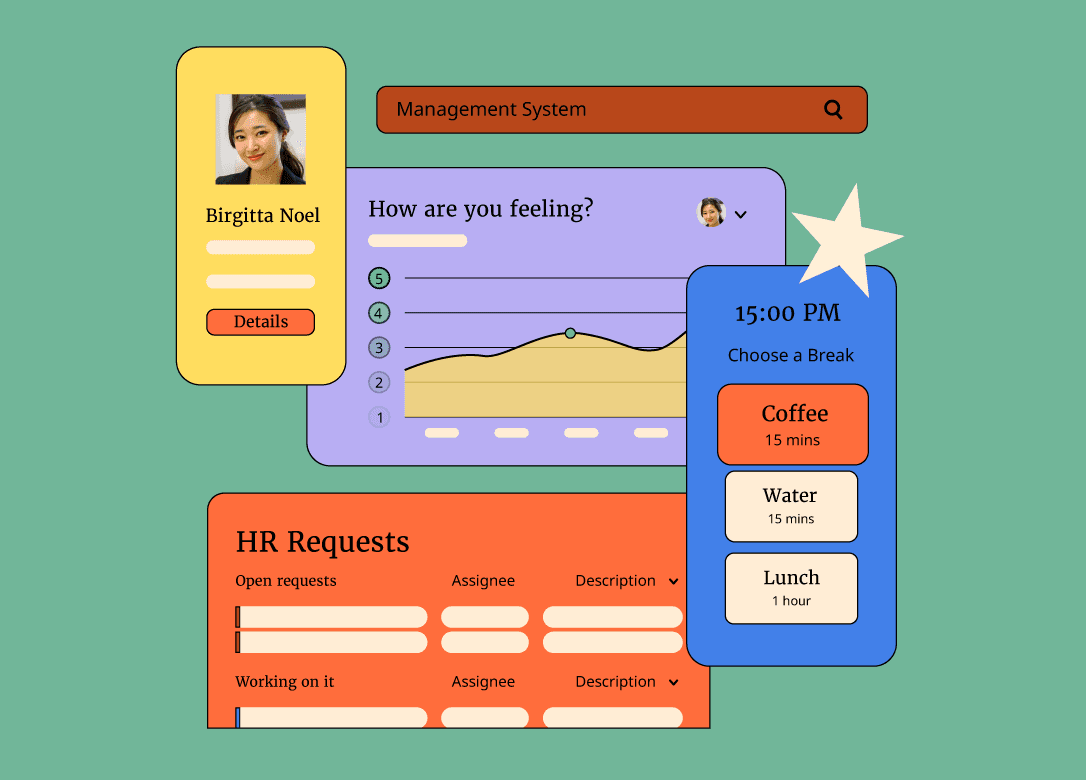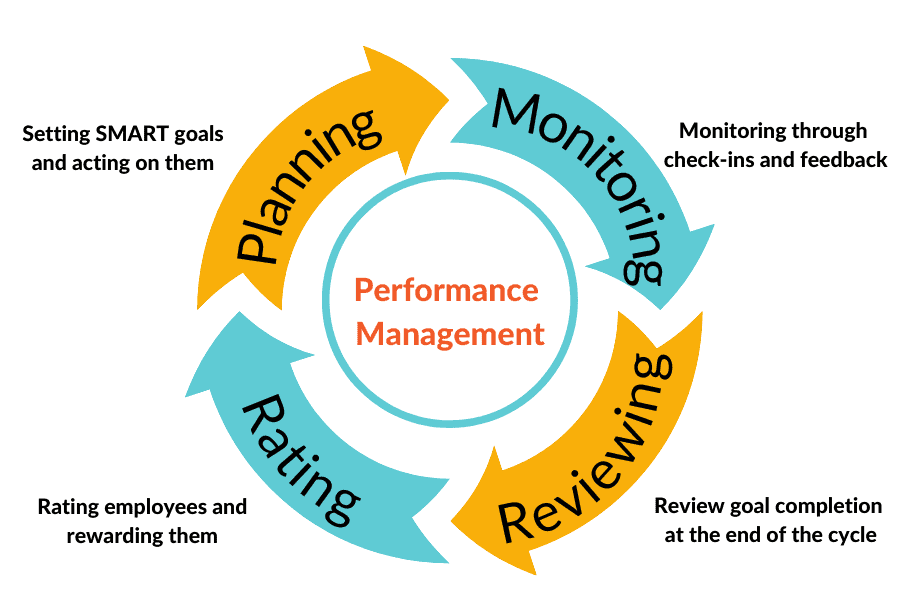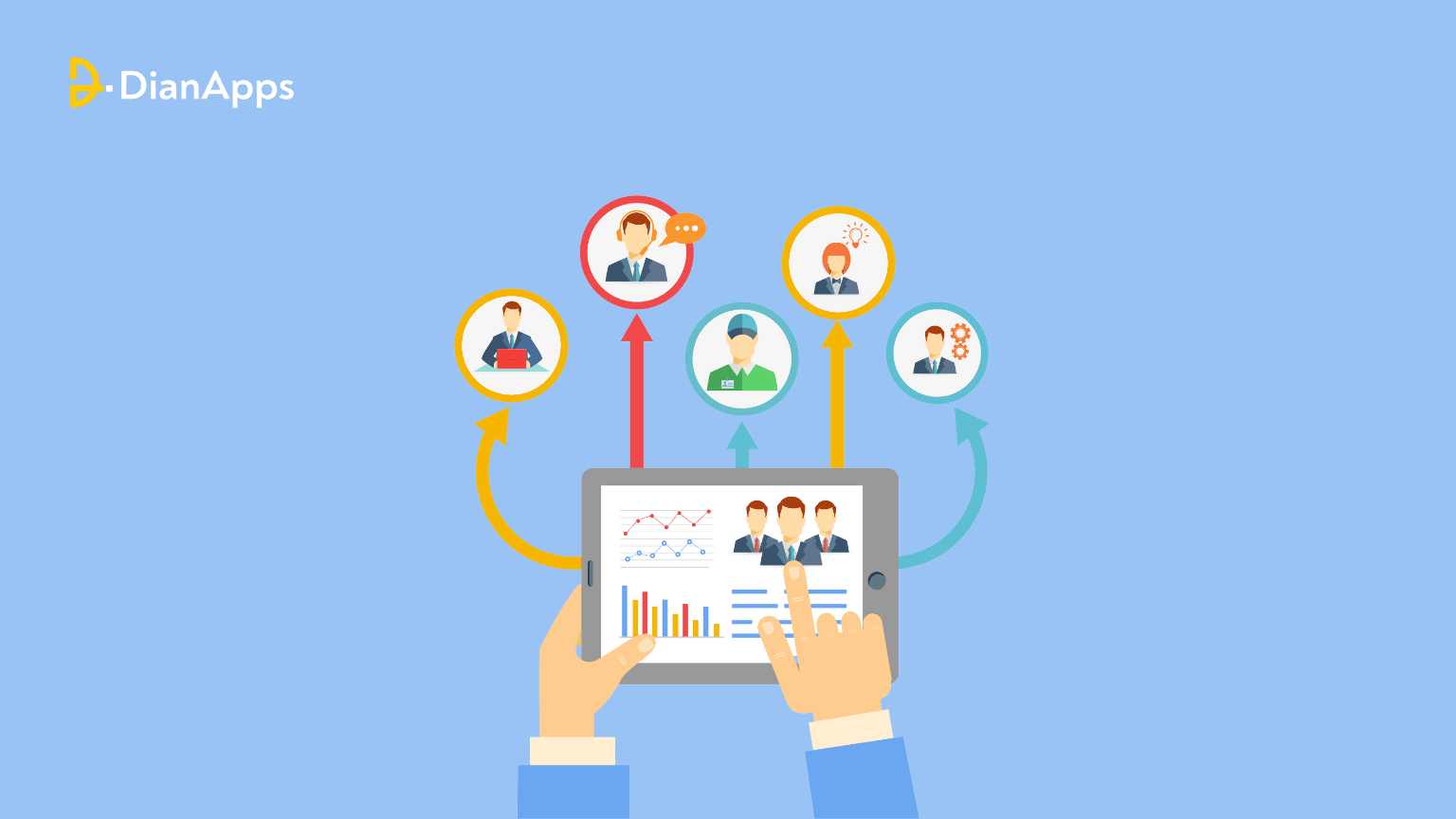Imagine a business where managers spend 40% of their time on manual administrative tasks like tracking employee hours or processing payroll—that’s nearly half the week gone, not on growth, but on routine tasks.
According to a study by CareerBuilder, 72% of HR managers say they have caught errors in their manual work, costing businesses both time and money. However, a lot of businesses continue to undervalue automation.
More than simply a convenience, an employee management system (EMS) is a vital tool that modern organizations require to maximize productivity, lower mistakes, and obtain insightful data about their workers.
What’s surprising? An EMS doesn’t just handle HR functions—it can also predict turnover rates by analyzing engagement metrics, allowing businesses to address employee dissatisfaction proactively.
For instance, companies that use EMS tools report 25% lower turnover rates than those Businesses using EMS technologies, for example, claim 25% lower turnover rates than those using manual processes. An EMS helps companies to make strategic choices based on real-time data, simplify processes, and automate and improve labor management.
Investing in an EMS now means embracing a future where data-driven insights provide better on-demand app development services and better business outcomes rather than relying only on manual procedures. Let’s examine the primary goal of a personnel management system.
How can an EMS benefit your business?
Selecting an EMS requires careful consideration of your company’s unique needs. By putting the right infrastructure in place, you can leverage state-of-the-art solutions to take your business to new heights. These are six more arguments in favor of making personnel management system integration a top concern.

Effectiveness in the Onboarding and Offboarding of Employees
An organized employee onboarding procedure may have a big impact on workers’ experiences. Retention, productivity, and engagement levels are impacted as a result. A well-planned process makes it simpler for new personnel to blend in with the work culture of your small firm. As former CEO and chairman of Xerox Corporation Anne Mulcahy so eloquently puts it, “Your greatest asset is your employees.” Recruiting and retaining elite personnel should be your main goal as they will provide you a competitive advantage.
By automating tedious processes like duty assignment, training, and document gathering, an EMS streamlines the onboarding process. It gives you and your group more time to concentrate on important business tasks. An EMS improves the process of onboarding by:
- Improved communication and connection
- Automated email sending
- Procedures for data collecting that are automated
- Allocating onboarding duties
- Centralized document storage
A frequently overlooked phase of the employment lifecycle is offboarding. This procedure is essential because it helps you keep positive working relationships with current staff members while safeguarding sensitive company data.
Also read: Navigating the software development lifecycle!
With the assistance of an EMS, processing asset returns and automating exit interviews can improve the offboarding procedure. It can furthermore:
- Boost future documentation
- Task reminders that operate automatically
- Procedures for secure data destruction and access revocation
Better Monitoring of Time and Attendance
Keeping precise time records is crucial for hour and wage compliance in any kind of organization. Accurate time and attendance monitoring is a standout feature of staff management software. By incorporating workplace monitoring tools, businesses can gain real-time visibility into employee activity, helping ensure that logged hours reflect actual productivity while supporting compliance and performance optimization.
While manual time-tracking techniques like as punch clocks and paper timesheets might occasionally suffice for small organizations, they are labor-intensive and prone to mistakes.
Software for performance management enables your staff to electronically check in and out. It not only reduces the possibility of mistakes but also does away with the necessity for laborious manual computations
By preventing time theft and incorrect payroll calculations, an EMS helps you reduce labor expenditures for your company. Your crew will be less anxious and more productive if there are fewer payroll mistakes and disagreements.
An innovative dashboard is included with personnel management solutions. You get immediate, real-time access to information on the number of hours worked and absences with this dashboard. It’s the greatest approach to guarantee a more accountable staff and reduce tardiness and absenteeism before they negatively impact your company.
Better Scheduling for Employees
Scheduling is another laborious and time-consuming process that an EMS can efficiently handle. Creating and overseeing work schedules may be difficult, particularly for small companies with varying shifts and unpredictable schedules.
This procedure is improved by a management system, which gives you access to sophisticated scheduling capabilities. Once variables like staff availability and requests for time off are taken into account, creating and modifying work schedules in real time is simple. This guarantees that your small firm has the right number of employees, avoids overstaffing or understaffing, and eliminates scheduling issues.
You’ll be in a better position to see an improvement in consumer satisfaction and more repeat business.
Feedback and Performance Management
The majority of small business owners find it difficult to assess employee performance and provide timely, consistent feedback. A framework for conducting performance evaluations, tracking advancement, and outlining performance goals is provided by a performance management system. It gets simpler to pinpoint high performers, find opportunities for development, and handle performance well.
Frequent performance reviews and feedback can also stimulate team members and raise engagement levels, which can lead to extraordinary business outcomes. With performance management software, you’ll have access to performance data in real time, which assures constant feedback. Constructive performance reviews are ensured with an easily adjustable, visible dashboard that makes it simple to produce and evaluate reports. And as business owners work through these systems, many also begin exploring how to create an employee recognition program that aligns with performance goals—further reinforcing strong contributions and boosting morale.
HR regulations and compliance
You have certain legal and regulatory obligations as an employer that relate to personnel and administrative matters. For instance, depending on your industry, you can be asked to produce specific documents quickly in order to support regulatory audits. Huge fines for breaking the rules might have an impact on your small business. This is particularly important if you hire remote employees from other countries, since you’ll also need to comply with local employment laws and regulations, but fortunately most global employment platforms such as Rippling (or a Rippling alternative such as Remote) include built-in compliance safeguards for this purpose.
Documenting, reporting, and recording employee data as needed is made easier and simpler with the use of an EMS. A function that informs you or notifies you before a certain record change is due may also be found in advanced platforms.
These days, it’s quite usual to witness hackers focusing on small companies. They frequently target private data, including bank account details, social security numbers, driving license numbers, and customer phone numbers.
Such sensitive information might put your company at risk of cyberattacks if it ends up in the wrong hands. Having a secure EMS might help shield your company from online hazards like malware and hackers.
Strong security features like data encryption and two-factor authentication can be included. It’s the finest defense against internal threats and hackers for your company and staff.
Also read: AI cybersecurity solutions: Identify its importance and apps
Data-Informed Decision Making
Features for analytics and reporting are available to you with a performance management system. Using these tools, you may create a variety of reports and evaluate important company data.
This solution offers insightful information about personnel statistics, performance KPIs (Key Performance Indicators), and compliance status for your company. These kinds of insights facilitate strategic planning and decision-making.
Top Features To Look For in Your Employee Management System
Effectively managing people to bring out their best work has become a major priority for nearly all organizations. Businesses have been experimenting with many approaches to enhance the employee experience, ranging from optimizing HR processes to enhancing daily staff management procedures. Investing in a comprehensive and user-friendly personnel management system is highly recommended if you want to provide your staff with greater assistance.

Six characteristics of an effective personnel management system are as follows:
1. Management of employee databases
The system you choose has to have a platform for managing personnel databases, which enables you to consolidate HR information for each department, area, and company. Using this functionality, you may quickly and easily manually input employee details or sync the data from compatible third-party apps. For simple data administration, a top-notch system will let you categorize your staff members by designation, department, and location. To maintain error-free records, employees can also view and modify their personal data.
2. Management of time, attendance, and leaves
Your company’s time management procedures should be automated and streamlined by your personnel management system.
It ought to include a feature-rich attendance and management system that lets staff members log in and request leaves from any location.
You can monitor each employee’s check-in and check-out times, overtime, leave balances, on-duty details, and user permissions with the aid of an excellent system. Its capacity to gather precise attendance and leave data can also make payroll computation easier.
Especially when integrated with HR payroll software, ensuring accurate and efficient salary processing by automating the transfer of time and attendance data into payroll calculations
Online timesheets should be a part of your personnel management system so that staff members can track the amount of time they spend on various tasks.
3. Self-service for employees
A successful personnel management system must have an employee self-service portal. Through the portal, workers may check information about their salary, benefits, and health insurance at any time, as well as complete the required HR papers and access pertinent files.
Employees may also use this site to enter project time, apply for leave, check their leave balances, and record their attendance. Through the system, they need to be able to submit requests and get in touch with their HR division.
In this approach, all queries and requests are arranged and promptly handled. A fantastic way to promote teamwork and disseminate company-wide news is through an employee portal.
4. Management of performance

One of the most crucial components of an employee management system is a strong performance management system. This component makes it easier for you and your management to see exactly where each of your workers is in terms of performance.
Employees should be able to do self-appraisals and get insightful feedback from peers and supervisors, and you should be able to conduct frequent performance evaluations in accordance with your organization’s demands.
To assist you in conducting fair performance, a top-notch performance management system includes modules like objectives, KRAs, competences, and talents.
5. Management of learning
The key to enhancing the employee experience is career development chances, which is why choosing an employee management system with a robust learning management platform is crucial.
The platform must to be adaptable enough to accommodate various learning approaches, such as blended learning and self-paced learning. This guarantees that every employee will have a comfortable learning environment.
For employee enrolment, you have to have the ability to design various courses, together with pre- and post-course assessments and tasks. Employees should also be allowed to begin and finish courses at a time, place, and pace that works for them.
Having mobile device access to the platform can further increase the flexibility of learning.
6. Individual analytics
People analytics is crucial to enhancing employee management since it enables businesses to comprehend worker expectations and identify the root causes of labor issues.
An easy-to-use people analytics solution that leverages employee data to determine the “why” behind particular workplace and organizational issues ought to be included with your personnel management system.
You should be able to monitor your organization’s growth rate, attrition rate, employee diversity, project status, attendance patterns, and performance trends with the use of the system’s reports.
Also, read some of the software development trends that can be relatable to EMS integration as well.
How to choose the right employment management system for your business?
It’s critical to take your company’s unique requirements into account when selecting an employee management system. Here are some things to think about:
1. Business size
It’s possible that smaller companies don’t require the same functionality as larger ones. Verify that the employment management system you select can handle the scale of your business.
2. The quantity of workers
The amount of employees you have should not be a problem for the system to handle.
3. Essential features
Payroll processing, time and attendance monitoring, and job applicant tracking are just a few of the functions that the system has to include.
4. Usability
Employees should be able to quickly become proficient with the system by making it simple to use.
5. Cost
The system ought to be within your means.
It’s critical to take your team’s and your own needs into account when selecting the best custom software development company for your organization. Your personnel management software may require the following features:
- The capability of monitoring worker hours and overtime
- The capacity to arrange shift swaps and make timetables
- The capacity to grant requests for time off
- The capacity to provide information about worker absenteeism or productivity
- Simple to use for supervisors and staff alike
Once you know the answers to these questions, you may evaluate several personnel management systems to determine which is ideal for your organization.
How To Run Your Employee Management System?
It is essential to have an employee management system (EMS) in place if you are an owner-operated firm. You may manage personnel data, onboard new hires, and do more with the aid of an EMS. The following advice can help you manage your own EMS:
- Verify if the system may be customized. It should be possible for the system to meet your unique requirements and preferences.
- Verify if the system is easy to use. Employees should be able to swiftly and easily retrieve the required information by using an intuitive method.
- Verify the security of the system. To ensure the safety and security of employee data, the system must be encrypted and password-secured.
- Verify that the system is current. Employers are required to periodically update the system with the most recent modifications to employment rules and regulations.
- Verify the system’s dependability. For employees to be able to rely on the system to function successfully every time, it must be stable and dependable.
That’s a Wrap
If you’re trying to figure out how to run your company more effectively, you want to think about using an employment management system. Time spent on administrative duties, such as keeping track of vacation days and managing payroll, might be decreased with the use of an EMS.
Your organization may achieve more success with the greatest employee management system (EMS), so be sure it’s the right solution for your needs.










Leave a Comment
Your email address will not be published. Required fields are marked *